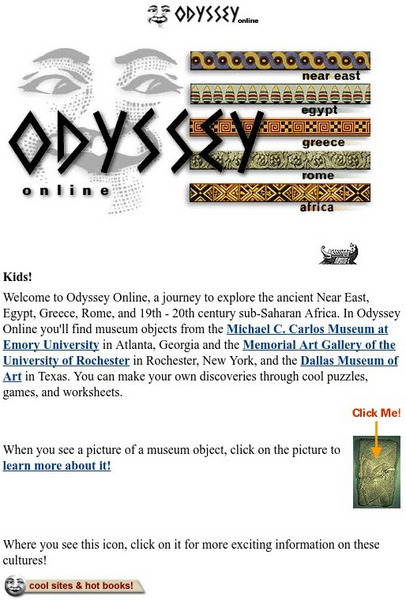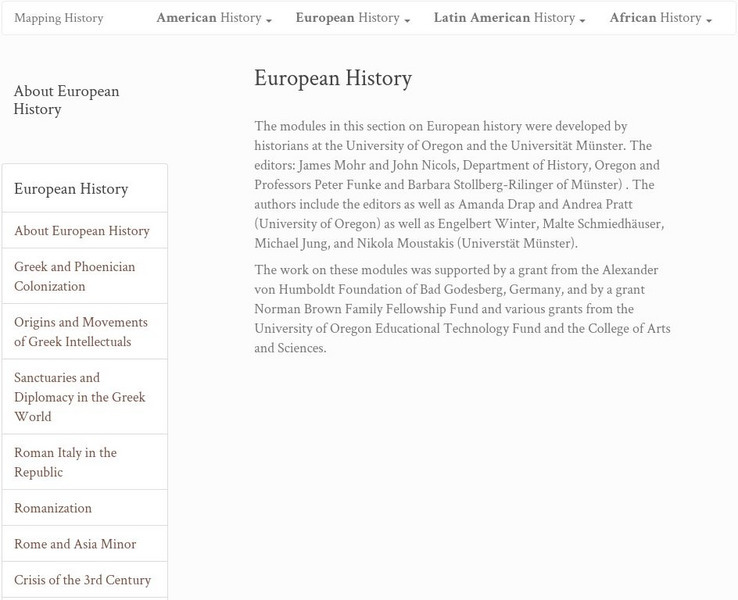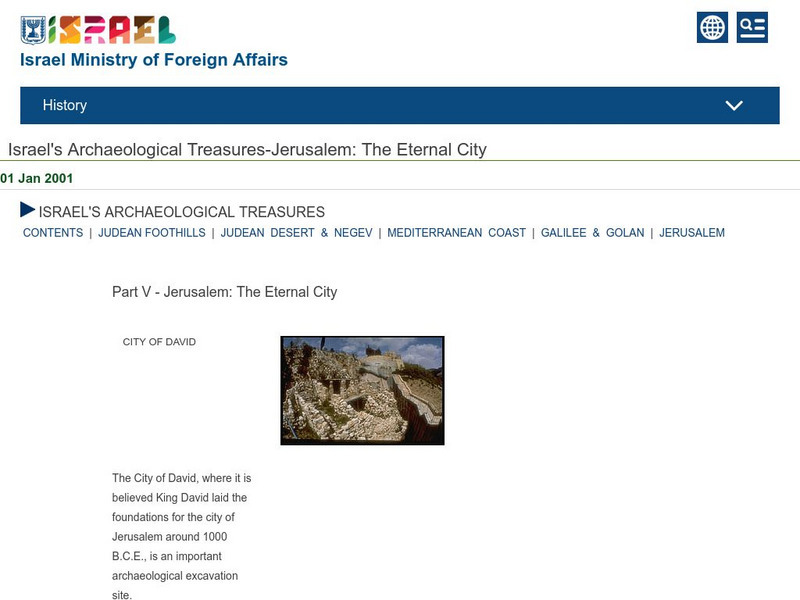National Humanities Center
National Humanities Center: Teacher Serve: 19th Century: Roman Catholics & Immigration in 19th Century America
Essay answers the question, "Why did so many Catholics come to the United States at this time?" The potato famine, urban industrialization, chance for a new life, are among some of the answers.
Other
University of Illinois: The Early Centuries of the Greek Roman East
Read about the history of the Romiosini, or Greek Middle Ages and the development of the Greek-Roman east. The article is divided into two different sections. The first section includes the foundation of Constantinople as a means to...
Forum Romanum
Outlines of Roman History: Decline of the Empire: The Times of the Severi
In this entry from Morey's 1901 textbook the decline of the Roman Empire is presented. The Severi emperors ranged from bad to worse, with the exception of Alexander Severus.
Other
3rd Millennium Ministries: Calvinism v Roman Catholicism
This resource presents an examination of the basic differences between Calvinism and Roman Catholicism. Several major differences are explained, both those of today and at those the time of the Reformation.
Other
University of Virginia: Rome Reborn 2.0
Resource presents 3D digital models that have been created to illustrate the urban development of ancient Rome. Follow the history of this project, chose the time period to re-create, and view the photo gallery of images.
Emory University
Emory University: Odyssey Online
Odyssey Online is a resource for both students and teachers as they explore world mythology in reading, writing, history, and art classes. Providing sections on Near Eastern, Egyptian, Greek, Roman, and African mythology, Odyssey uses...
Vroma Project
V Roma Project: Forum Romanum: The Curia
A good site that provides both a picture of and information about the Curia as it stood in Roman times.
Franco Cavazzi
The Roman Empire: 'Theodosius the Great'
This site provides a biography of Flavius Theodosius (Theodosius the Great), a man who became emperor for a brief time following the Battle of Adrianople.
A&E Television
History.com: Tailgating: How the Pre Game Tradition Can Be Traced to Ancient Times
The ritual grew as ownership of automobiles and then mass production of portable grills and plastic coolers soared. Tailgating before college and professional football games is an American tradition. Temporary tent cities pop up in...
Forum Romanum
Outlines of Roman History: Times of Pompey and Caesar:the Rise of Pompey
In a passage from William Morey's 1901 textbook, we learn of the military brilliance of Pompey.
Other
The Roman Baths Bath: Where's My Cloak Game
Help Peregrinus solve the mystery behind his missing cloak. Explore the Roman Baths, travel through time and write your curse to punish the thief in this point and click adventure game.
That Quiz
That Quiz: Practice Test: Place Value
Test your knowledge of place value. Additional challenges include scientific notation and Roman Numerals. Seven levels of difficulty may be attempted with or without a timer.
Other
Willamette Coin Club: The Times and Coinage of Diocletian: 284 305 a.d.
A description of the massive job facing Diocletian when he assumed the leadership of the Roman Empire, and how he developed the tetrarchy. There is also information about Roman coinage.
Other
The Emergence of the Augustan Age
This site provides basic information in outline form about the time from the death of Caesar to Octavian's triumphs after the defeat of Antony and Cleopatra. Site assumes that you know most of the major names in Roman history. Written by...
ClassFlow
Class Flow: Roman Numerals
[Free Registration/Login Required] A lesson designed to explore the use of Roman numerals and how they are used today. Students learn the symbols and have the opportunity to practice by dragging the symbols to match the given number....
University of Oregon
Mapping History: European History
Interactive and animated maps and timelines of historical events and time periods in European history from Greek and Phoenician colonization up to the 20th century.
University at Buffalo
University of Buffalo: Nimes Amphitheater
A click-through photographic gallery of the Nimes Amphitheatre, with additional images of other Nimes structures from Roman times. Use the forward arrow to advance through a series of pictures to view the amphitheatre's exterior and...
National Endowment for the Humanities
Neh: Edsit Ement: In Old Pompeii
Use this lesson to take students on a virtual field trip to the ruins of Pompeii to explore everyday life, art and culture in ancient Roman times. Students will then use what they learned about the history and destruction of Pompeii to...
Israel Ministry of Foreign Affairs
Israel Ministry of Foreign Affairs: Second Temple Period
This site from the Israel Ministry of Foreign Affairs provides an article on the history of one part of Jerusalem called the "Upper City," during the period of King Herod and into the Roman period. Includes a nice description of a house...
Israel Ministry of Foreign Affairs
Imfa: Jerusalem the Eternal City
A pictorial tour from Israel Ministry of Foreign Affairs of the most famous of Jerusalem's archaeological sites starting with the "City of David," and ending with the "Western Wall," the only wall of the temple mount left standing after...
University of Calgary
University of Calgary: The End of Europe's Middle Ages
This useful tutorial includes information about the economy, feudalism, the Holy Roman Empire and other important topics pertaining to Europe in the fourteenth and fifteenth centuries, a time of transition in European history. Easy to...
Savvas Learning
Pearson Education: Greek and Hellenistic Civilization [Pdf]
This is a summary of chapter three of a textbook on world history. It looks at the contributions of the ancient Greeks to western civilization, the breadth of their civilization in the Mediterranean and the Black Sea regions, and their...
Other
Museum Tours: The David Roberts Gallery: David Roberts, r.a.
David Roberts was a 19th century artist who traveled to Egypt and nearby regions to paint and draw architectural structures and people. His published work was very popular in England. This is a collection of 124 pieces of his work that...
Other
Livius: The Destruction of Jerusalem in 70 c.e.
A discussion of the revolt of the Jewish people in 70 C.E. which led to the destruction of the Temple in Jerusalem by the Romans.

















